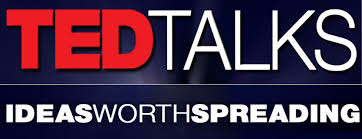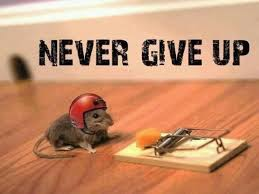
If you have ever experienced a TED talk, you know that every single speaker consistently presents a topic in a fascinating and engaging way.
A friend of mine recently told me that he wondered why each presentation was so good. So he researched the subject and discovered that TED talk organizers actually have specific guidelines for each of their speakers. He sent me the list, and as I looked at it I realized that this list is exactly how an MGO should approach a presentation to a major donor.
So here are 12 things TED speakers are asked to do. I’ve reproduced the comments from my friend, and then applied each point to your work with major donors. I suggest you print this list out. When you are getting ready to speak with your donor, run your outline and presentation by it to make sure you are on track. Here we go:
- Present one great idea. “An idea isn’t just a story or a list of facts. A good idea takes evidence or observations and draws a larger conclusion.” Of course TED talkers often have multiple points, but they always have direction: they’re always moving forward to a set conclusion. They also suggest to the speaker: “Get your idea out as quickly as possible.” So, what is your one great idea to present to your donor? And does it match their passions and interests? It needs to.
- Set a time limit. “Shorter talks are not lesser talks. It may only take 5 minutes to make your point unforgettably.” You know as well as I do that this area can get out of control. You can talk way beyond what you need to. Here’s how they approach this: “Make a list of all the evidence you want to use: Think about items that your audience (read donor) already knows about and the things you’ll need to convince them of. Order all of the items in your list based on what a person needs to know before he or she can understand the next point, and from least to most exciting. Now cut out everything you can without losing the integrity of your argument. You will most likely need to cut things out that you think are important.” Setting a time limit and sorting through your points, as they have suggested, will force you to get to the important point you want to communicate with your donor.
- Collaborate. On the above suggestion: “Consider making this list with a trusted friend, someone who isn’t an expert in your field.” During rehearsal stage, the guide recommends “listening to criticism.” I love this point – practicing your presentation with a colleague. I often do this with my wife and Jeff. I go over what I want to say and they invariably help me cut out a bunch of junk I shouldn’t be saying or that is not necessary.
- Put time into visuals. “Note anything in your outline that is best expressed visually and plan accordingly in your script.” In the section regarding the question, “What goes in my slides?”, the guide states: “Images and photos: to help the audience (read donor) remember a person, place or thing you mention, you might use images or photos… Use as little text as possible – if your audience is reading, they are not listening. Avoid using bullet points. Consider putting different points on different slides.” Think about this point this way. If you were to take a donor to visit your program, she would immediately get a visual input that would affect her emotionally. THAT is what you are trying to replicate by implementing this idea. You are taking the donor, visually, right into where program happens. You can’t do this enough. Cut out the words. Add pictures.
- Practice. “Once you’re settled on your outline, start writing a script. Be concise, but write in a way that feels natural to you. Use present tense and strong, interesting verbs.” After the script is finished, the guide implores: “Rehearse, rehearse, rehearse! We can’t stress this enough… If someone says you sound ‘over-rehearsed,’ this actually means you sound stilted and unnatural.” This goes back to the point on collaboration, in which you are going over your donor presentation with a colleague. Same idea. But here, you are just with yourself going over the content you have decided to present. Why do this? So you can be natural, conversational and convincing.
- Stay away from notes. “TED discourages long talks, podiums or readings.” This isn’t for everybody – but it’s certainly worth noting that, according to the best speakers in the world, notes are considered to be a thing of the past. Ouch. This is hard for me to do. But you can see the logic of it. IF you are sitting with your donor and just explaining things vs. looking at your computer or notepad, your presentation will come off warm and sincere.
- Avoid industry jargon. “Don’t use too much jargon, or attempt to explain new terminology… Spend more time on new information: If your audience (read donor) needs to be reminded of old or common information, be brief.” Here is where things go astray. Jeff and I have seen many proposals and writings presented to donors that are so filled with insider language you would need a subject expert in the room to interpret things. Just say it simply, in plain English. And don’t think that the words given to you by program people are understandable, because most often they aren’t.
- Draw people into caring. “Start by making your audience care, using a relatable example or an intriguing idea… Draw your audience (read donor) in with something they care about. If it’s a field they never think about, start off by invoking something they do think about a lot and relate that concept to your idea.” If you know the donor’s passion and interest, then you will know what he cares about. And if you have that information, implementing this point will be easy. Just make sure you do it.
- Show how it makes a difference. “Don’t use your conclusion to simply summarize what you’ve already said; tell your audience (donor) how your idea might affect their lives if it’s implemented.” Or, better said, “Tell your donor how his gift will make a difference.” That is really what he wants to hear.
- Keep structure clear but invisible. “Your structure should be invisible to the audience (donor). In other words, don’t talk about how you’re going to talk about your topic – just talk about it!” It’s like telling a good story. When a story is told the right way, the donor gets it, feels it and is moved to action by it. And all of this happens seamlessly.
- Stay planted. “Practice standing still, planted firmly in one spot on stage.” I’m not sure I agree with this point for presentations to audiences, since moving around often, in my opinion, creates interest and keeps the audience with you. But, I needed to leave the point in since it is one of TED Talks’ 12 points. I suppose you could say – stay focused. Don’t get distracted and don’t allow for distractions in how you present.
- Respectfully address arguments. “Respectfully address any controversies in your claims, including legitimate counter-arguments, reasons you might be wrong, or doubts your audience (donor) might have about your idea.” You know your donor will have doubts and questions about what you are saying. Try to come up with what they are BEFORE you present. Then, openly and honestly, present them as you are meeting with them. It is never a good idea to cover up an issue with a donor. Openness and honesty are key values in donor relationships.
There you go. A great list to help you get ready for your presentations and encounters with the donors on your caseload. If you carefully follow the wisdom in this list, the quality of your meetings with your donors will increase. And that will be good for you and good for them.
Richard






This is excellent advice – glad to read it. Thank you.
Glad to have found your organization and blog via LinkedIn. You’ve earned a new subscriber.
~ Maya
il.linkedin.com/in/mayanorton